Southside Story
Author: Johnny Bontemps, Marisa Wong, Luke Rafferty
0 General Document comments
0 Sentence and Paragraph comments
0 Image and Video comments
Whirlybird, a year-old coffee shop on South 2nd Street in Williamsburg, serves good espresso and organic, gluten-free breakfast tacos filled with scrambled eggs, Oaxaca cheese, jalapeños and homemade salsa. It’s a tiny place, with wooden stools and high tables, music playing from a vinyl record player, and vintage record sleeves hanging on the walls. The clientele is young and trendy, a contrast to the two elderly men who stood on the sidewalk one recent morning, chatting in Spanish. On a wall a few feet from the shop’s entrance, an artsy, bird-accented mural points passersby toward Whirlybird. But wedged in between the sign and the shop itself, there’s another mural: a Puerto Rican flag painted on the wall, partly faded, chipped off in places, and above it, the words: “Rest in Peace – In Memory of – Noel – Nelson – Raul – Melegan.”
This contrast is ever more blatant in Williamsburg’s Southside—or Los Sures, as many of its Latino residents call it. Strolling the streets of the well-defined Brooklyn neighborhood—a square mile area nestled around the base of the Williamsburg Bridge on the East River waterfront—one bears witness to its sometimes violent past, but also to the strong sense of community and cultural pride that has emerged amid years of struggle. Schools, churches and communal places bear Spanish names, like the community garden Espiritu Tierra on South 2nd Street. Puerto Rican and Dominican flags hang from windows and balconies, or on a rope between buildings on a stretch of South 3rd Street. Murals and graffiti cover many building walls—some standard tags, others themed around social issues from abortion to asthma; others commemorate the young men killed on the streets when the neighborhood was still one of the poorest, most violent and drug-ridden parts of the city.
In recent years, the Southside has undergone dramatic changes, for better or worse. While it did not gentrify as quickly as the notoriously hipster-filled Northside of Williamsburg, it is now doing so at a remarkable rate, partly brought on by the 2005 zoning changes on the Williamsburg-Greenpoint waterfront. The yoga studios, art galleries, bars and trendy restaurants have finally begun to leap across Grand Street, the horizontal strip that has traditionally separated the Northside and Southside, conspicuously planting themselves in a foreign landscape.
To many New Yorkers, this surely sounds like the same old story. And yet, there’s also something unusual going on in Los Sures. The neighborhood institutions that have emerged during its rough past are now helping residents navigate the changes brought on by the gentrifying tide. For instance, housing organizations such as the Southside United Housing Development Fund Corp. and St. Nicks Alliance, which for decades have worked to develop and preserve affordable housing for the community and helped tenants take control of their buildings when the neighborhood was in bad shape, now assist residents with different housing issues—helping them face up to landlords who use illegal harassment tactics to push long timers out; or assisting priced-out residents find other affordable housing options.
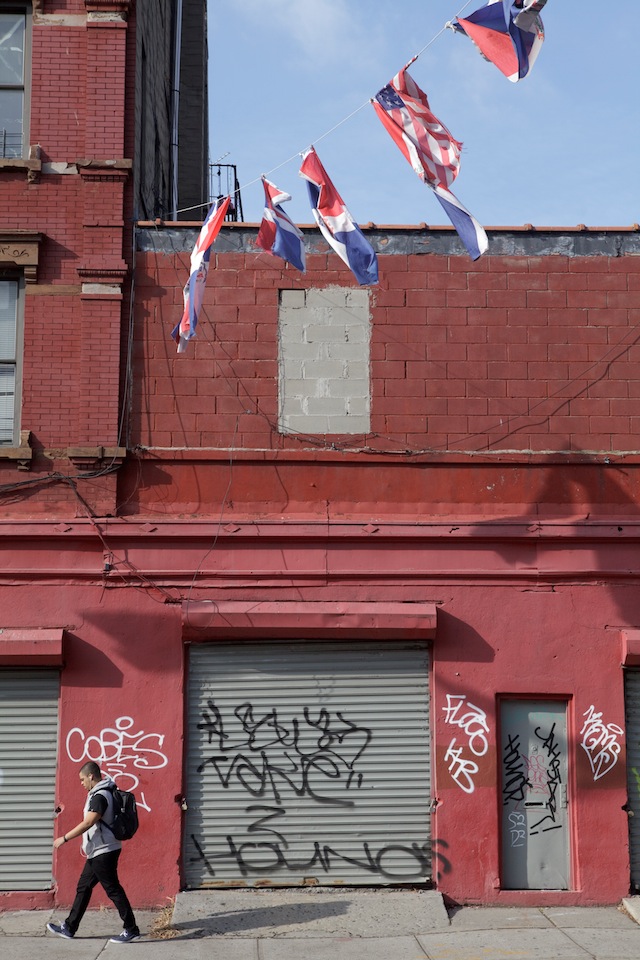
The community group El Puente, founded in 1982 to provide a safe haven for young people, now also works to promote the Southside’s cultural legacy. In 2011, the organization launched an initiative called Green Light District, a ten-year plan that, according to Green Light District director Anusha Venkataraman, ”seeks to flip the disempowerment of gentrification” by asserting the community’s cultural presence, through festivals and events, and health and education initiatives. In short, El Puente strives to ensure that the Southside Latino community is part of the change rather than a powerless casualty.
“Communities change, but that does not mean you cannot be a part of that change,” said City Councilwoman Diana Reyna at the Green Light District launch event in September of 2011. A product of the neighborhood, Reyna, thirty-eight, is the first Dominican-American woman on the City Council and a close ally of the neighborhood groups.
El Puente’s efforts are supported by $2.8 million in city, federal and private funding, including a $150,000 grant from the Rockefeller Foundation and a $500,000 secured by U.S. Congresswoman Nydia Velazquez.
Still, groups like El Puente and Southside United face an uphill battle. After all, the Southside’s Latino population has already decreased from seventy to forty-five percent of the neighborhood in the past decade, from roughly 20,000 to 15,000 residents, mostly lost to white non-Hispanics. But the story is still unfolding.
* * *
Last October, Miguel Hernandez, a lifelong Southside resident and an artist organizer at El Puente, led a small group of teachers and scholars on a walking tour of the neighborhood, part of a weekend conference about the role of the arts and humanities in public life.
At fifty-three, Hernandez is a jovial man, with a protruding belly, white hair combed back, and a thick white beard. The resemblance to Santa Claus is no coincidence. Every year, for the past five years, Hernandez begins growing his beard around August, and he’s the neighborhood Santa at various community events during the holiday season. Hernandez is also a sort of informal historian; he loves to collect information about the neighborhood’s past and keeps black-and-white photographs of old buildings and landmarks. On tour day he was wearing blue jeans and a self-made navy blue t-shirt reading: “Everything I know I learned in Brooklyn.”
The tour began on South 2nd St in the “Espiritu Tierra,” or “Earth Spirit” community garden. Twenty years ago the place was an abandoned lot used as a garbage dump—a two-story-high pile of trash, explains Hernandez. But residents, led by El Puente, cleaned it up in 1993 to create a communal meeting place. Last year, two hundred community members gathered here for the launch of the Green Light District Initiative, which included the public profession of ten key focal points built around the motto “Aqui Mantenamos Unidos!”—“Here We Stand United!”
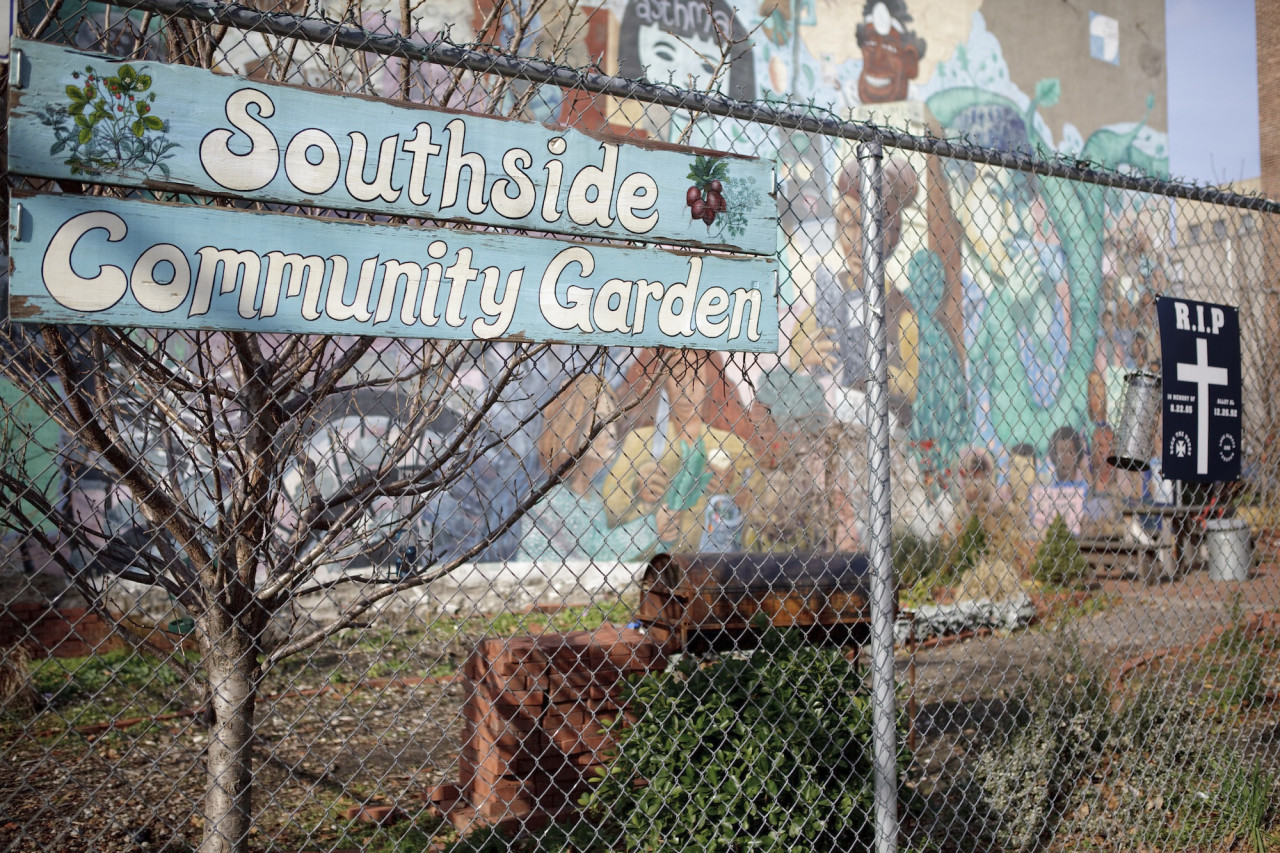
“It helps people remember and feel accountable,” says Hernandez. “And it goes along with the Latino tradition of professing declarations publicly.”
“It also goes with the spirit of Simon Bolivar,” he adds, referencing the military leader who played a crucial role in Latin America’s struggle for independence from the Spanish Empire and remains a hero throughout Latin America. Bolivar, like the Green Light District Initiative, embodies the struggle for self-determination.
“Latinos feel so much pride when they see Bolivar’s statue in Central Park. He’s such a meaningful figure,” Hernandez tells the group, his voice beginning to crack.
Then he pauses. After ten long seconds, he pushes his sunglasses above his eyes and wipes away a few tears. The small crowd gathered at the garden remains silent, and a few of us swallow the lump in our throats.
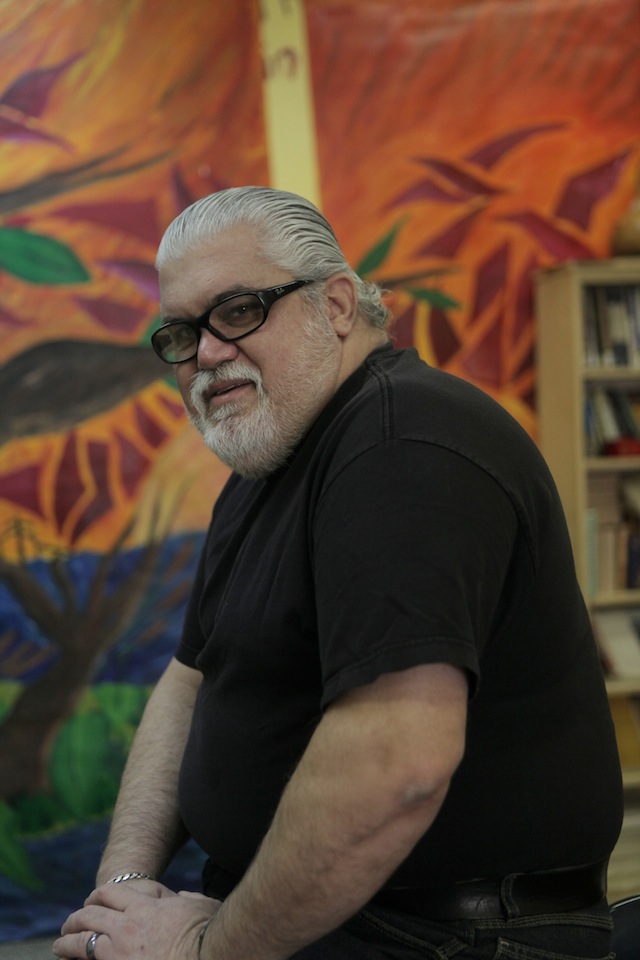
“I’m sorry,” he says finally. “I get emotional when I talk about this. The power of history is just overwhelming. And if I could get it into everybody’s head the way it is in my head, I really believe we could change the world.”
“Because of gentrification, people’s families were leaving,” Hernandez tells us, “and the loss of empowerment can be overwhelming.”
He goes on to explain that the first few years of the initiative will be about “reconnecting.” “Puente,” he says, means “bridge” in Spanish—a fitting name for an organization that is wholly committed to building a future for its community.
* * *
The first Latinos, most of who were political exiles, arrived in Williamsburg in the 1890s. A major influx of Puerto Ricans followed in the 1940s with what came to be known as the Great Migration. That Puerto Ricans settled around the East River makes sense. For nearly a century, ships had been carrying raw sugar from the Caribbean to the Brooklyn waterfront, where today sits what remains of the Domino Sugar Factory.
In the 1950s Williamsburg’s Southside was a vibrant neighborhood, but it was among many that fell into decline during the ’60s and ’70s, partly due to a loss in manufacturing activity, and to city policies of urban renewal. For instance, the construction of the Brooklyn-Queens Expressway destroyed some of the area’s affordable housing. By the ’70s, the effects of deindustrialization and depopulation were badly felt. Schools had shrunk. Businesses had left the areas. Some landlords had abandoned their properties, the cost of maintenance not worth the low income generated in the declining area.
The New York City blackout in July of ’77 proved a major blow. For two days, like many other troubled neighborhoods, Los Sures plunged into chaos. Stores were broken into, their gates ripped off by chains tied to the backs of vans. Fires were lit. Many more merchants left in the aftermath, adding to the economic devastation. By the early ’80s, the community was one of the most violent in the city, a cesspool of gangs and drugs. At the grimmest point, the neighborhood lost forty-eight young people to violence in one year. On top of that, the presence of the BQE, the Williamsburg bridge traffic, and the toxic footprint from its industrial past gave the heavily-polluted Los Sures some of the highest asthma rates in the country, leading El Puente co-founder Luis Acosta to eventually dub it, in a 2007 Vice documentary, “the most toxic place to live in America.”
The chaotic climate gave birth to community organizations with hopes of turning the neighborhood around. The Southside United Housing Development Fund Corp, commonly known as just “Los Sures,” was one of them. For the past forty years, the organization has developed and preserved thousands of affordable housing units for members of the community.
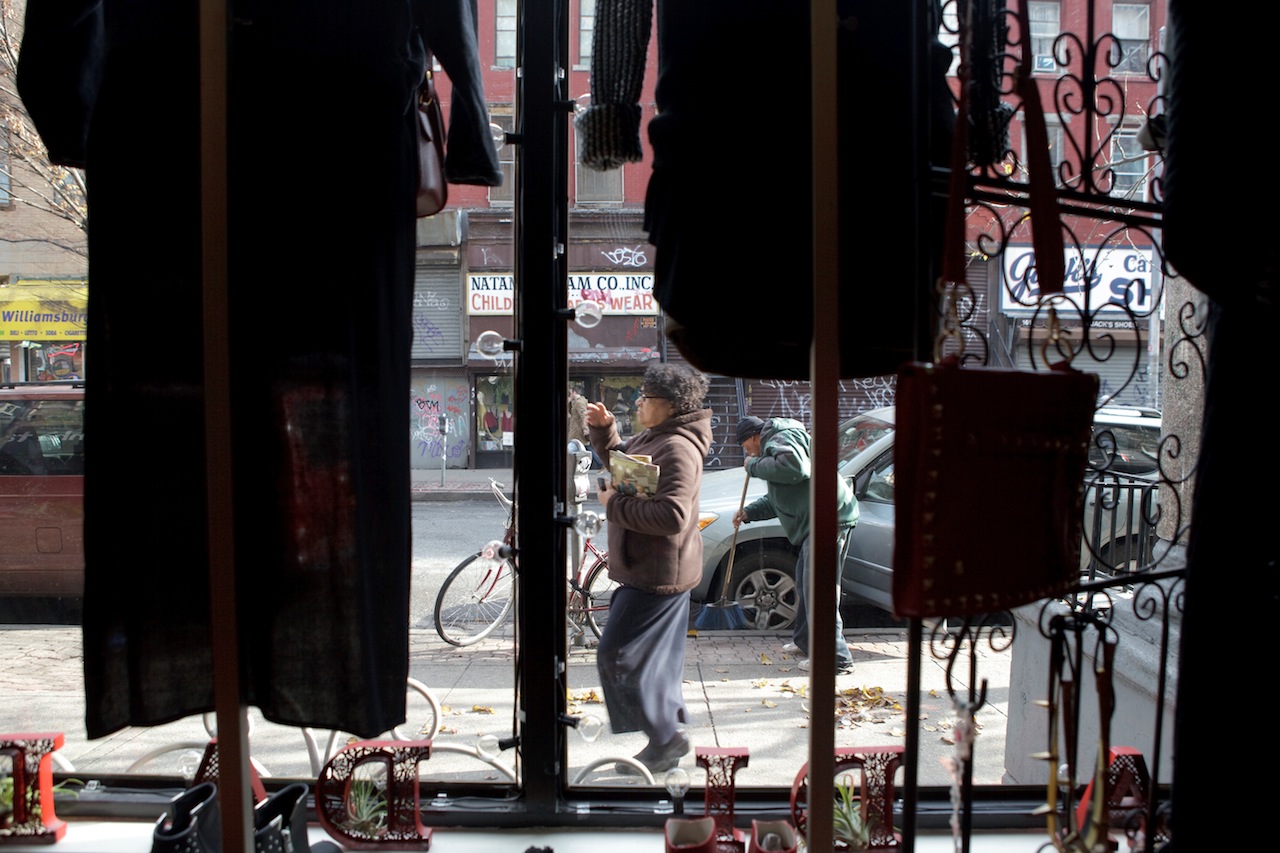
Barbara Schliff, one of four community organizers with Los Sures today, began working with the group soon after its founding. She landed in the Southside through the VISTA program, a Peace Corps-like initiative, proposed by President John F. Kennedy in 1963 and launched by President Lyndon B. Johnson in the following year, which focused on troubled U.S. neighborhoods.
“In the early 1970s, when the neighborhood was in decline, young people got together and started thinking about tenants taking control of their own buildings,” explained Schliff. Renters formed tenant associations to maintain livable conditions, she said, whichled to the creation of Los Sures.
“In the past, if landlords didn’t keep their building in good conditions, the city would take over and manage it from a central office. The idea with Los Sures was that it’d be better if done locally, and to hire a small staff of handy men and bookkeepers, and to manage buildings through contracts from the city,” Schliff said.
Luis Acosta, Frances Lucerna and Eugenio Maldonado followed suit in 1982, co-founding El Puente as a community center that would serve as a safe haven for local youth, and build leadership through the arts. In 1993, the year they cleaned up the community garden, they also created El Puente’s Academy for Peace and Justice, the United States’ first public high school with a focus on human rights. And four years later they founded the Community Health and Environment institute, which facilitated federally funded scientific research on local asthma problems, and advocated for environmental justice.
It is this rich local culture, the history of struggle and victory, that community organizers hope to preserve and build upon as gentrification rolls in and newcomers import their own culture.
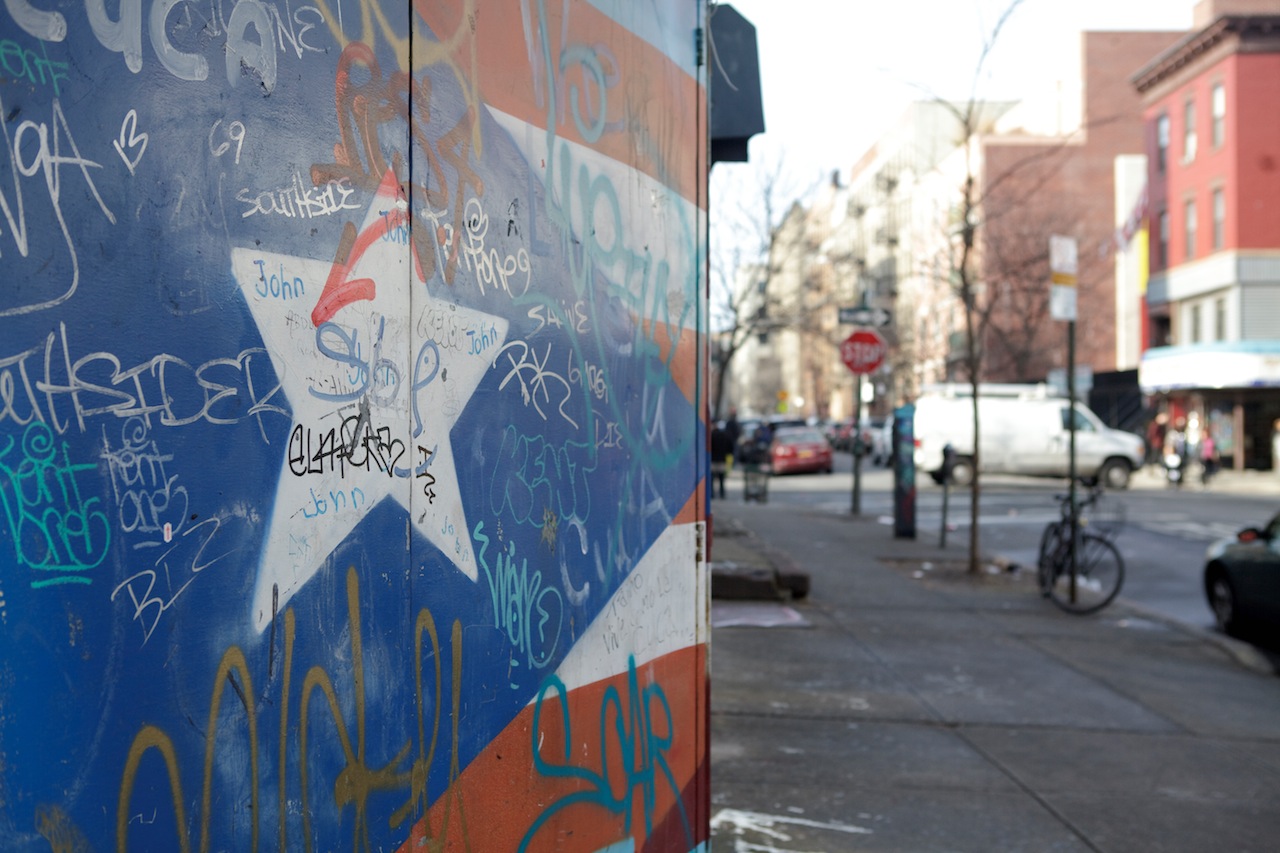
“They are attracted to the colorful and vibrant things of the community," says Eugenio Maldonado, sixty-eight, one of ElPuente’s co-founders. “But they need to be more aware that people were here before. This neighborhood went from a very difficult neighborhood to a safe neighborhood. And that was not done in a vacuum. People have been working hard to create that.”
* * *
From the community garden, Hernandez walked the small group a few blocks to South 1st Street, past Bedford Avenue, where the basement of a building now houses El Museo de Los Sures. The small museum was opened a few months earlier by the Southside United Housing Development Fund Corp to capture the story of the neighborhood’s Latinos.
Next, we proceeded to the corner of Berry and South 1st. There, on the wall of the Jose de Diego Magnet School for the Visual Arts, was a new colorful community mural, titled “Nurture Nature,” that depicts community members gardening. It’s collaboration between El Puente and the school, intended as a way for the younger generation to leave a cultural footprint, especially as the area changes.

From there, we walked along Berry to South 4th Street to take in a dramatic mural painted in 2000, depicting smoking babies and titled “Ashes to Ashes.” The community, Hernandez stressed, has been home to artists for many years—long before the area began gentrifying. One of El Puente’s goals with the Green Light District is to map out local artists and artisans and to promote their work through exhibition and festivals. The program, led by Hernandez, is dubbed the WEPA project, for “We Empower People’s Art.”
On an early evening last fall, about a dozen Latino men and women met a few blocks away for an event called “Abuela’s Remedies,” in which they shared knowledge of home health cures passed down from mothers and grandmothers.
“Para la grippe, mi mama siempre coja lemon, agua tibia, sal, y vinagre,” offered one. (Lemon, lukewarm water, salt and vinegar for the common cold.)
“Ginger tea with warm milk is great for the throat,” recalled someone else.
One offered a rather unconventional remedy—a banana peel smeared with Vicks, and applied to the forehead, is great for headaches.
“Let me see when you do it so we can take a picture,” one of the men said. Everyone laughed.
The event—held at the Ecohouse, a traveling exhibit about energy efficiency housed in a small mobile home—was part of a Community Thursday meeting series organized by El Puente and intended to reinforce cultural ties. Each week’s installment focuses on a different theme—a knitting circle, a Zumba class, a bomba drumming session, a holiday potluck. Seeking to move beyond cultural preservation and housing issues to other proactive community improvements, El Puente has partnered with the non-profit Community Environmental Center, which in addition to providing the Ecohouse for a few weeks, offers weatherization and energy efficiency services to affordable-housing units, such as free energy audits and assessments to retrofit homes. Of course, fostering the arts, culture, and health of the community is only part of the battle. As Barbara Schliff explained, housing organizations like Los Sures are still fighting hard against the meat of gentrification—the mass displacement of longtime residents.

“Some people have rent-control apartments, and landlords often want these persons out so they can start charging more,” says Schilff. “So there’s a lot of pressure for low-income tenants not to get repairs and services.” “In a building on South 3rd St,” she goes on, “there’s a large proportion of newcomers paying outrageous rents—there’s a tenant there that paid a $14,000 security deposit, and his rent is $2,400, in a building with no elevator, no amenities that you might expect with that kind of rent—and then you have other people who have been living there for a long time, some have been living there for fifty years, who don’t get repairs.
In response, Los Sures helped organize a rent strike that lasted two-and-a-half years, ultimately landing in housing court and resulting in an agreement a few months ago. The landlord in question was forced to make necessary repairs.
“That’s the kind of work we’re doing now, helping the people that are here maintain their home,” Schliff says. “They’re the ones who’ve been in the community and who’ve built it. They’ve suffered through all the hard times. They deserve to stay here, too, and to have decent housing.”
In addition, Los Sures also organizes workshops about tenant ownership and co-op buildings in partnership with El Puente. They are also part of a larger coalition of organizations providing similar services—helping displaced tenants apply for affordable housing and providing legal counsel when necessary. Known as “Mobilization Against Displacement,” or MAD, the group was founded in 1999 in anticipation of the waterfront rezoning and includes a diverse array of partners: Churches United, North Brooklyn Development Corporation, Neighbors Allied for Good Growth, St. Nicks Alliance and their legal arm, Brooklyn Legal Services Corporation A, which has partnered with some of these organizations for over twenty years to prevent some twelve thousand housing evictions.Schliff went on to explain that Los Sures also helps eligible tenants apply to programs that offer exemptions from rent increases, such as the SCRIE (Senior Citizen Rent Increase Exemption) and DRIE (Disability Rent Increase Exemption) programs. If they qualify, which many of them do, they can get their rent frozen; when they renew their lease, the tenants don’t have to pay the increased rent. And the landlord, instead of a subsidy, gets a discount on real estate taxes.
According to Marty Needelman, Project Director at Brooklyn Legal Services Corporation A—who, like Schliff, began working here as a VISTA volunteer more than four decades ago— “We are the cops that protect tenants from being forced out of their home.”
* * *
Edda Figueroa, fifty-two, was born and raised in the Southside, and has lived in the neighborhood for the past fifty years. Figueroa moved out of her old apartment on South 5th Street seven years ago, after the landlord raised her rent by $700 one month. So she applied for affordable housing through St. Nicks Alliance and was ultimately offered a place in a new development through a housing lottery.
“I remember when rent used to be $300 for 3 bedrooms,” says Figueroa. “Now it’s $3,000. Even the newcomers can’t afford it on their own, so they cram several roommates in it. But a working family can’t afford that. They’re the ones who would keep it up nice because they want to stay long-term. Many newcomers only stay one year—it’s like a pass-through for them. We’re in here for the long haul.”

“I remember when we had gangs, drugs, and abandoned buildings,” Figueroa continues. “But we still had the spirit of culture and family. Now it’s becoming more like the Village—we don’t need to go to Manhattan anymore,” she jokes.
To be sure, Figueroa doesn’t think that change is bad, and she and her neighbors no longer see the newcomers as “intruders”—“just newcomers,” she says.
“Now Latinos have become a little more accepting,” Figueroa explains. “We can have different cultures in the same community. It’s not for the worse, it’s just different. The community is still holding on. You still see older men playing dominos outside. We all live here, so we might as well live in peace. We all want one thing—just to have a happy life.”
Only time will tell whether or not the community activists in the Southside can succeed in keeping their long-standing neighborhood together. For now, the community seems most notable for its ambition and optimism, and without that, Los Sures might have looked like the Northside, with its dime-a-dozen boutiques and towering luxury condos, a long time ago.
Of course, there is no stopping change—only slowing it, finessing it. Hernandez is one of the first to admit that.
“Today everybody is blending together,” he says. “Progress hurts—but in the end, it’s all for the better.”
* * *
Johnny Bontemps is freelance writer in New York. You can reach him at johnnybontemps (at) gmail (dot ) com.
Marisa Wong is a multimedia storyteller based in Brooklyn.
Luke Rafferty is studying photojournalism at the S.I. Newhouse School of Public Communications. He worked with Narratively as an intern this winter.
General Document Comments 0









0 archived comments